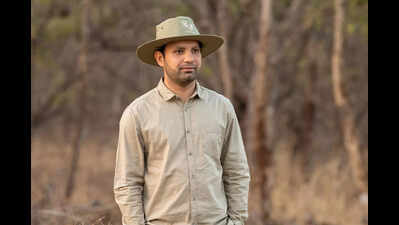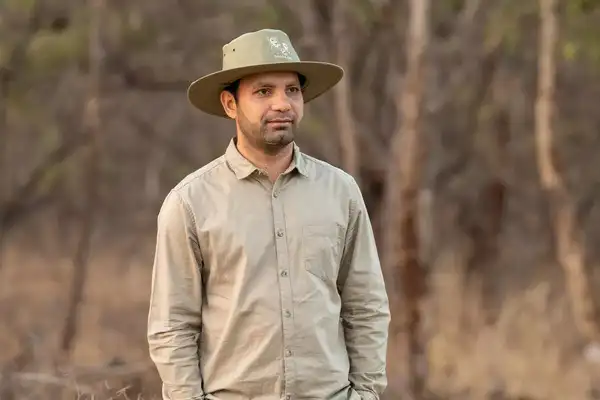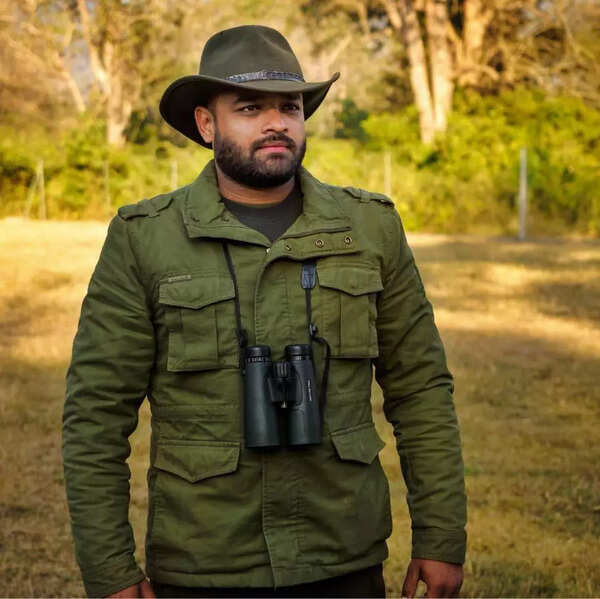ARTICLE AD BOX

Behind The Count Of 891 Asiatic Lions In Gujarat Lies An Extraordinary Operation Involving Thousands Of Searchers Who Divided Saurashtra’s Vast Territory Into Forest Beats And Village Clusters, Deploying GPS Technology And Cameras To Document The Entire Range Of The Apex Predators. No Corner Was Left Unexplored, No Effort Spared
Gujarat just completed the ultimate game of hide-and-seek with the jungle royals across 35,000 square kilometres, counting 891 of them in 358 locations. The census exercise gave us the estimated population of the world’s last remaining Asiatic lions through methodical planning and technological precision.

But here’s what made it so complex — not only did teams have to locate lions across vast wilderness, they had to guarantee no lion was counted twice.The forest department’s lion census tradition dates back to 1963. The earliest counts were conducted using the pug mark method developed by K S ‘Bapa’ Dharmakumarsinhji, a Bhavnagar royal and wildlife photographer whose ‘Field Guide to big game census in India’ was published in 1959.

From 1968 to 1995, six census rounds employed live baiting, until animal welfare concerns prompted a shift in 2000. The current direct beat verification (DBV) approach, also called block count, has proven to be scientifically sound and practically effective. This method divides survey areas into manageable units — forest beats within protected areas and clusters of 3-10 villages elsewhere.By counting lions in these smaller blocks, officials achieve more accurate estimates while making the task logistically feasible with less manpower, time, and cost.
Its adaptable framework easily incorporates new technologies as they emerge. The census combined minimal total count with DBV, approaches that the department considers robust and practical. Forest staff’s familiarity with lion populations through daily patrols ensured accurate identification and eliminated duplication.
Independent observers including wildlife experts, state board members and NGO representatives joined to ensure transparency. The operation featured three specialized control centres, one each for data analysis, data compilation and field team monitoring. Safety measures were comprehensive — 16 doctors from Saurashtra joined the teams, ready to provide emergency aid. Teams carried wireless walkie-talkies, binoculars, GPS instruments, digital cameras, maps and data sheets — turning the exercise into a precise operation while maintaining the irreplaceable element of experienced observation.‘No Room For Counting Errors’Mohan Ram, forest officer

The Asiatic lion (Panthera leo persica) is a remarkable global conservation success story. From May 10-13, 2025, the Gujarat forest department conducted the landmark 16th Lion Population Estimation, a meticulous assessment spanning 35,000 sq km across 11 districts and 58 talukas.To ensure scientific rigour, we divided the Asiatic lion landscape into eight distinct regions, 32 zones, 112 sub-zones and 735 sampling units.
Each unit was assigned a dedicated team comprising a forest guard or forester as the primary enumerator, two assistant enumerators and a volunteer to ensure comprehensive coverage and precise data collection.Our teams conducted intensive surveys, tracking lions through both direct sightings and indirect signs.For every lion encountered, we meticulously recorded critical data: time, direction, estimated age, exact GPS coordinates and group composition.
We documented distinctive identifying features, such as unique scars and ear notches, on standardized identification forms complete with detailed sketches.Details were also plotted on maps of each assigned sampling unit.Data collected from all units were systematically compiled by sub-zonal officers (range forest officer or senior forester), who then forwarded the consolidated information to zonal officers (deputy/assistant conservator of forests).Based on the comprehensive details gathered, these zonal officers carefully identified any probable duplicate observations in both the forms and maps of their assigned areas before submitting the refined data to the regional officer (chief conservator or conservator of forests). The regional officer then conducted a thorough review, eliminating any remaining duplicate entries to ensure accuracy.We employed advanced GIS technology to analyze spatial overlap, creating 1km, 2km and3km buffer circles around each recorded location.
Entries within these overlapping zones underwent additional scrutiny using observational details to remove any duplicates before finalizing the count.
The ambitious undertaking
- 35,000 sq km of Asiatic lion landscape surveyed- 8 regions comprising 11 districts, 32 zones, 112 sub-zones and 735 sampling units covered-3 to 10 villages formed one sampling unit-3,254 people involved-1 enumerator and 2 assistant enumerators per sampling unit for thorough survey and data collection-3 control centres set up to monitor the exercise-May 10 (2pm) to May 11 (2pm): Primary estimation-May 12 (2pm) to May 13 (2pm): Final estimationPERSONAL ENCOUNTERS: JOURNEYS THAT COULD INSPIRE A MODERN JUNGLE BOOKParimal Nathwani,Rajya Sabha memberAfter 35 years of regular visits to Sasan Gir, I finally had the extraordinary opportunity to participate in the lion census, a first for me.
The experience was nothing short of incredible, offering me insights into the methodology employed by forest department staff and govt officials.My journey through Dodia village to the coastal regions of Chanch Bandar, Bherai Vidi, Zanzarda Vidi and Torrent Land revealed something remarkable: lions thriving along Gujarat’s coast appeared to be stronger and larger. It was a thrilling experience for me to find so many lions inhabit the coastal areas of Gujarat.

At Chanch Bandar, leopards had claimed an abandoned ship in the closed shipyard, while nearby, at the ruins of Vijay Mahal — former palace of Bhavnagar’s Maharaja Krishnakumar Sinhji — villagers confirmed that lions, leopards and hyenas now coexist in this historic landscape.My wildlife encounters were unforgettable. At Bherai Vidi, I watched the famous ‘Queen’ lioness with her cubs. Zanzarda Vidi offered something even more intimate — a lioness with her fresh kill while cubs played around her.
The Torrent Land area surprised me as it was a vital breeding ground for lions.From Ambardi village in the Sarasiya range, lions dotted the landscape in impressive numbers. The heights offered a magnificent view of nature and the landscape.For me, the most significant aspect of the census tour was witnessing how extensively lions have made Gujarat’s coastal areas their home.These few days that I spent in different lion habitats gifted me some of my most fulfilling experiences.
I will cherish these beautiful memories for years to come.Dr Jalpan Rupapara,RadiologistAs a wildlife researcher, I had the dual task of conducting the census while collecting field research data over four days. Day 1 (May 10) started with a field visit to the Gir West reserved forest areas near Talala. An unexpected summer downpour created wonderfully cool and pleasant conditions as we encountered a magnificent Asiatic male lion.On the second day, we surveyed coastal areas including Bherai reserve forest, where we observed a lioness with her three cubs and three unrelated subadult males — a classic example of lions’ social nature.

The group was feasting on a blue bull carcass. At Zanzarda Vidi, we spotted a pride of 10: two adult females, four subadults and four cubs around a cow carcass. It was fascinating watching small cubs dominate the kill as subadults chose to surrender rather than fight. On May 12, we discovered the largest pride in the census: two identical adult males, six lionesses and 12 cubs near a blue bull carcass. It was a remarkable conclusion to four days of unforgettable fieldwork.Anand Punja, Forest conservationist from UKGir has always held a special place in my heart since my university days. My master’s thesis was on joint protected area management with Gir as my case study. More than 25 years later, I returned to the abode of Asiatic lions for the 2025 lion census — a dream come true.

At Gir, I registered and attended training delivered with charisma by DCF Mohan Ram, who prepared us for the four days ahead. I was assigned to Round Officer Hiteshkumar Rathod’s sub-zone — could not have asked for a better team.
We counted and verified lions across three beat areas within Gir Wildlife Sanctuary and National Park. We identified and registered six lions — two males, four females. A week later, the results — 891 lions minimum — confirmed that Gir’s wonderful conservation success story continues.Devvratsinh Mori, ProfessorI felt proud and humbled to have been chosen for the 16th lion census, more so because I was the youngest observer on the team. I was assigned to the Liliya zone in Amreli district, a landscape I knew fairly well from earlier field experiences.
The fieldwork was all about mutual respect and collaboration. In Liliya, we recorded several lion sightings males, females, cubs and full prides.

We also came across Indian foxes, jungle cats, striped hyenas, wild boars and a variety of birds including the Indian eagle owl, short-toed snake eagle and the Asian paradise flycatcher.One of the biggest challenges we faced was the unseasonal rain. In some areas, the roads turned marshy and even vehicles couldn’t get through. But we didn’t stop. We even rode tractors to reach remote beats and continue with the exercise.



.png)
.png)
.png)
















 4 hours ago
5
4 hours ago
5









 English (US) ·
English (US) ·